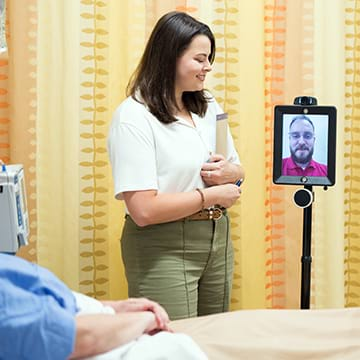In the crisis response of a community disaster, social workers play an important role. From assessing the overall situation to highlighting individual people who need immediate psychological attention, it is vital that a social worker is prepared to act quickly and efficiently to provide care.
In Samford’s Master of Social Work program, this preparation takes place through courses like Disaster Preparedness and Response taught by Lisa Baker, professor and chair of the school’s Department of Social Work.
In the spring of this year, Baker added a new dimension to this course, creating an assignment that introduced virtual reality to the classroom.
“Virtual reality lends itself well to disaster response since we want our students to gain experience in this area before they face it in real life,” Baker said. “The idea behind introducing this technology in the classroom is to immerse our students in scenarios where they often have few opportunities to practice.”
Prior to the start of the spring semester, Baker partnered with David Robbins, assistant professor in the school’s Department of Health Informatics and Information Management, through a Samford University Innovative Technology grant to film a scenario with a 360-degree camera. In this scenario, a social worker, played by Baker, walks a client through a home assessment with the goal of developing a disaster preparedness plan.
Using virtual reality goggles, students become fully immersed into the sights and sounds of the scenario. “As they watch the video, students should be listening to our conversation and looking around the room for details they should include in the disaster plan,” Baker said. “They should notice things like—if the family needed to shelter in place, where would they go? If they needed to evacuate, what could be potential barriers? In putting together a preparedness kit, what items, like copies of medical prescriptions, should be included?”
The experience is designed to hone students’ observation and communication skills through virtual reality and, for Baker, this first assignment is just the beginning. “In our practice courses, we could apply virtual reality to a number of different scenarios,” she said.
For example, virtual reality could be used to give students a realistic interaction with a person who is having symptoms of a psychotic episode. “We talk about this in class, but until you are able to interact with someone experiencing hallucinations or exhibiting disorganized speech, you may not fully understand it,” she said. “It’s one thing to talk and read about these behaviors, but it’s a whole different thing to see it up close.”

Meet our Telepresence Robots
This summer, Samford's Master of Social Work program purchased two telepresence robots, making it possible for students in the program’s online courses to participate in simulation experiences taking place on campus.
Learn More

